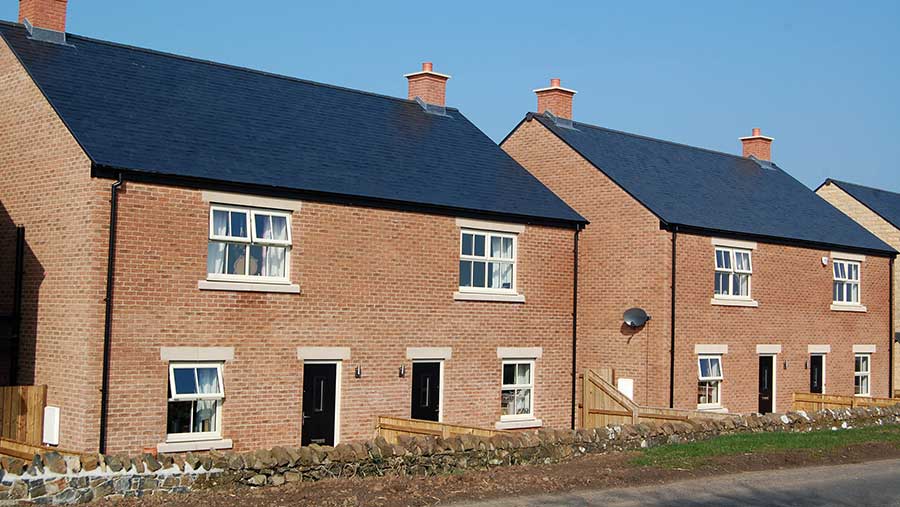New policy could make it easier for landowners to build rural housing

More than one in four CLA members want to build affordable housing. A new way to develop more homes of this type in the countryside is being proposed by the government in the draft revised National Planning Policy Framework (NPPF).
This could help ease the rural housing crisis and financially benefit the landowner by allowing some open market housing on a new designation known as entry-level exception sites (Eles).
These would be for predominantly affordable to rent and own properties for those taking their first step on the housing ladder.
See also: Housebuilding boom – what does it mean for farmers?
This could be a much more effective mechanism to deliver more affordable homes because the policy seems to recognise that a landowner needs more of an incentive to provide land than is offered by rural exception sites.
The proposed Eles will allow more market homes and discounted sale homes to be built and managed by the landowner without the involvement of a housing association.
Current restrictions
Currently, one of few ways to meet the affordable housing needs of small rural communities is through rural exception sites (RES).
These are small sites on land not normally used for housing that are built on and managed by a housing association.
It can be an effective policy but is used inconsistently across local authorities – just five have built 45% of all affordable homes on RES since 2011 (see “Top five local authorities for building affordable homes on RES 2011-2017”).
Development is also restricted to a small proportion of landowners who can afford to donate or sell land at reduced or agricultural value.
Top five local authorities for building affordable homes on RES 2011-2017
- Cornwall UA – 1,875
- Norfolk – 466
- Cambridgeshire – 424
- Devon – 413
- Shropshire UA – 403
The proposed Eles would make it more commercially attractive for the landowner to release land and deliver a higher number of affordable properties.
Local authority co-operation
Although national policy currently prohibits landowners from letting properties for affordable rent on exception sites, the Bolesworth Estate in Cheshire has successfully worked in co-operation with the local authority to deliver a scheme that offered four open market homes for rent and three for affordable rent.
Providing both a commercial incentive and giving landowners more control to build and manage the properties for sale themselves means they are more likely to pursue development rather than hand over to a housing association.
This could result in more sites coming forward and more affordable homes being delivered across local authorities where the RES policy is not being used to its full potential.
The NPPF consultation closed this week. The CLA will be watching the outcome on the proposed Eles measure and expects the final version of the NPPF to be in place by autumn 2018.
RES and Eles compared |
|
|
Rural exception site (RES) |
Entry-level exception site (Eles) |
|
Land outside existing settlements not normally allocated for housing. |
Land outside existing settlements not already allocated for housing. |
|
Sites come forward on an ad-hoc basis and address local housing needs assessment. |
Sites available where need is not being met across the local authority. |
|
Land is sold at about agricultural value, with a housing association then gaining control over the building and letting. |
Land values likely to be higher due to the potential for market housing, although the land would not usually be sold – the higher value would be recognised in the sale of market housing. |
|
Five to 15 affordable homes can be developed. |
Contains a mix of market sale, discounted sale and affordable-to-rent homes suitable for first-time buyers – the mix has not yet been set out. |
|
Development built and managed by a housing association. |
Development usually built and managed by landowner. |
|
Affordable in perpetuity. |
Landowner can sell discounted homes at least 20% below local market value. These remain discounted for future households determined by local incomes and local house prices. |
